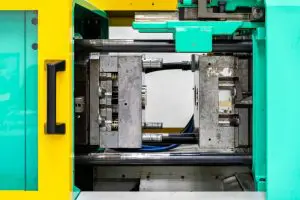Multi-slide die casting is a metalworking manufacturing process that is instrumental in the production of small, complex metal parts with a high degree of accuracy and repeatability. This die cast method is well suited for high volume production runs for applications where close tolerances, smooth surface finishes, and/or thin walls are required (e.g., medical devices and electronics components). However, it can also be used to create larger items such as engine blocks and machine housings.
As a die cast method, multi-slide die casting has become increasingly popular over the last decade and many businesses are starting to acknowledge its merits and use this method in the production of their parts. If you have a project that requires complex metal parts with near net shapes, then multi-slide die casting is the way to go.
Table of Contents
How does Multi-Slide Die Casting work?
Multi-slide die casting is typically performed using Aluminium or Zinc alloys. The alloy choice will depend on the final application and required properties of the part. For example, Zinc alloys are often used for parts that will be plated or painted, as they offer good corrosion resistance and a smooth surface finish. Aluminium alloys, on the other hand, are often used for parts that require a high degree of strength or stiffness.
The multi-slide die casting process begins with the creation of a metal die. This die is then mounted on a slide, which is attached to a moving platform. The platform moves the die under a series of stations, each of which performs a different function in the manufacturing process. The process is as follows:
The metal alloy ingots are first placed in a furnace and melted. The molten metal is then injected into a mold that contains the desired shape of the part. The mold is then inserted into a die casting machine, which contains a series of slides that move the mold back and forth, hence the name multi-slide. As the mold moves, the metal solidifies and takes on the shape of the part. Once the part has cooled, it is ejected from the mold and can be post-processed as needed.
When compared to other conventional die casting processes, multi-slide die casting also offers a significant advantage in terms of material utilisation. Due to the nature of the process, time is saved, and very little material is wasted.
Difference Between Multi-Slide Die Casting and Conventional Die Casting
As mentioned earlier, multi-slide die casting is a process that involves the use of multiple slides to create a casting, this is different from conventional die casting, which only uses a single slide. In terms of accuracy, the multi-slide die casting process is more accurate when compared to the conventional die casting method because it allows for greater control over the placement of the molten metal. This increase in accuracy results in parts that are less likely to be defective and require less post-production machining.
In addition, multi-slide die casting has a higher production rate than conventional die casting because it can produce multiple parts in a single cycle. Finally, multi-slide die casting is usually less expensive than conventional die casting because it requires less energy and metal to produce a casting.
Choose EKO for Your Multi-Slide Die Casting Needs
If you are looking for a high quality multi-slide die casting service provider, look no further than EKO industries. We have been in business for over 20 years and have a proven track record of providing our customers with the best possible products and services. In addition to our high quality products, we also offer competitive pricing and quick turnaround times. Contact us today to find out more about our die casting processes or some of our other manufacturing capabilities.



